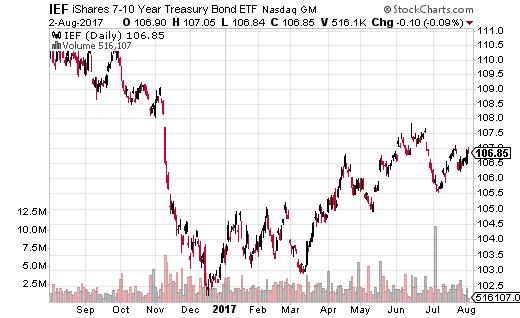If you were to take a poll of investors who've traded options, you’d probably find the majority of them have traded single stock options, notes options expert Jay Sosoff, editor of Investor Alley’s The Market Cap.
Get Trading Insights, MoneyShow’s free trading newsletter »
I'd venture to guess most investors think of options as a way to trade names like Apple (AAPL) or Tesla (TSLA). A handful of the people you poll may have utilized options on ETFs, particularly stock index ETFs. A smaller number still could have used options to trade commodity ETFs.
The interesting thing is, I’d be surprised if you came across more than one or two people at most who have used options to trade currencies, bonds, or interest rates. What’s surprising about this is how huge those markets are - far bigger than stocks in most cases. Yet, barely anyone even realizes how easy it is to trade them with options.
For instance, there are fairly straightforward ways to trade an upcoming Fed meeting using options. Keep in mind, the Fed or FOMC meeting is when the central bank decides what it will do with the key interest rate - called the Federal Funds rate. What happens with the Fed Funds rate will in turn impact every other interest rate, from Treasury bonds to mortgage rates to auto loans.
Now, you can trade futures and options (on the futures) on the Fed Fund rates directly listed by the CME (Chicago Mercantile Exchange). Those products aren’t really catered to the average investor though. Instead, it’s much easier to trade interest rates using ETFs of Treasury securities.
The most popular Treasury ETF is the iShares 20+ Year Treasury Bond ETF (TLT). However, if you want to trade intermediate-term rates, the better choice is iShares 7-10 Year Treasury Bond ETF (IEF). While IEF isn't as heavily traded as TLT, it does trade 2 million shares a day on average.
In fact, someone just made a huge trade in IEF recently which also may clue us in to what big investors think will happen with interest rates in the coming months. Here’s the trade...
An investor executed a BuyWrite on IEF, buying 1 million shares of IEF at just under $107 per share while simultaneously selling 10,000 January 19, 2019 108 calls for $0.90 per contract. A BuyWrite is the less commonly known name for a covered call trade. This covered call trade with 10,000 options and 1 million shares is about as big as you'll see.
In fact, the trader will collect $900,000 in premium from the call selling, while also getting long the shares at around $107. He or she could make close to $2 million on the trade if IEF closes at $108 next January. The trader will also be protected down to just above $106 due to the premium from the call trade.
In other words, this covered call is a mildly bullish trade on bonds (or a mildly bearish trade on interest rates since bond prices are the inverse of interest rates), since the max profit is at $108. Anything above $108 will still be profitable, but the gains are capped until the options expire.
So what’s it mean about interest rates?
Well, this is a pretty sizable bet by someone that interest rates may drop a little, but not much by next January. You can imply from this trade that the Fed will at most, raise rates one more time (by a quarter point) before mid-January. This does in fact mesh with what most economists and traders believe. By the way, if IEF doesn’t move, the trader will still collect the $900,000 in premium.
I believe this is a very savvy trade. Barring some major unexpected catalyst, the Fed isn’t going to lower rates. At the same time, it’s highly improbable the Fed raises rates more than a quarter point. Your two likeliest scenarios are a quarter point hike or do nothing.






















